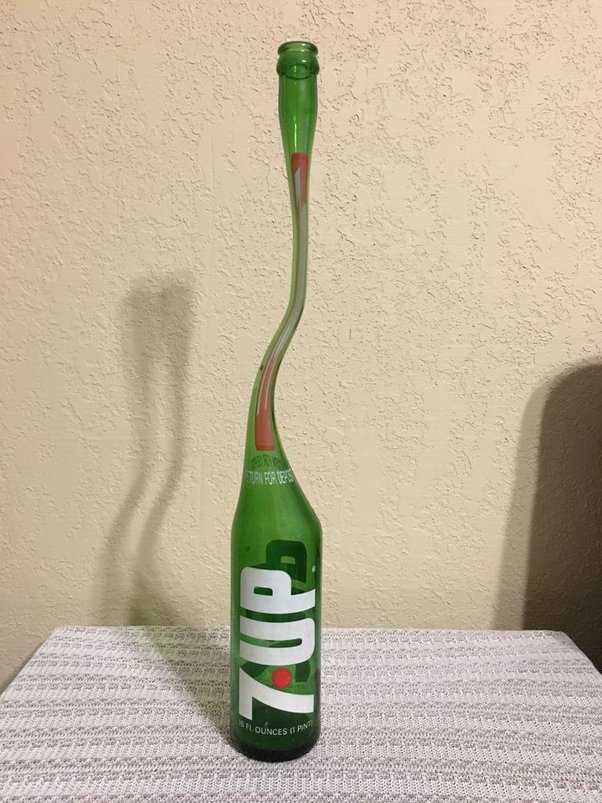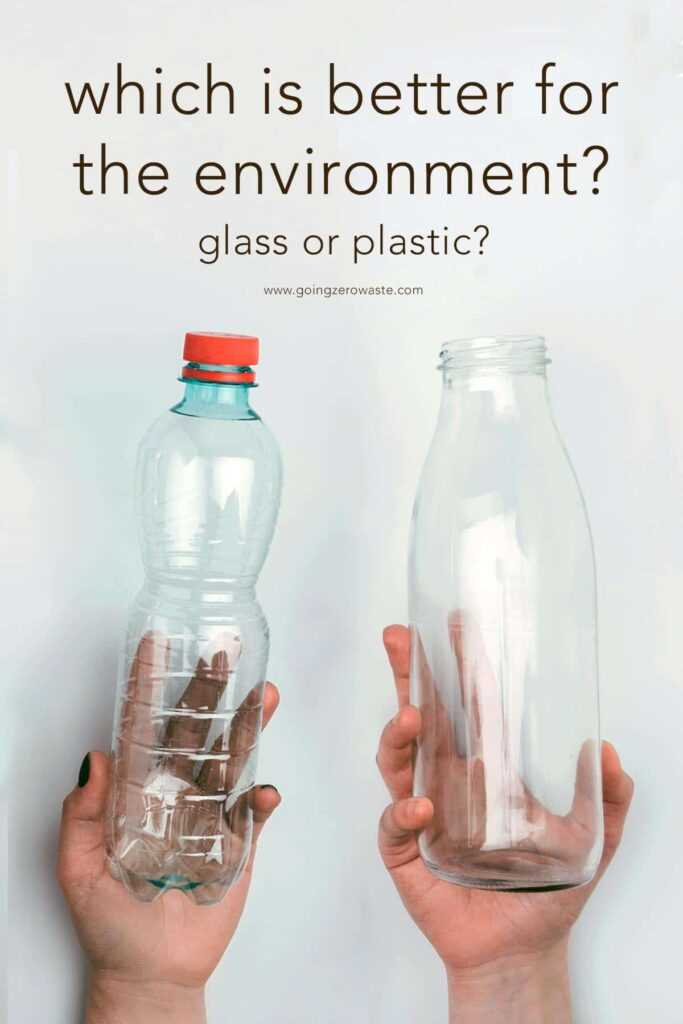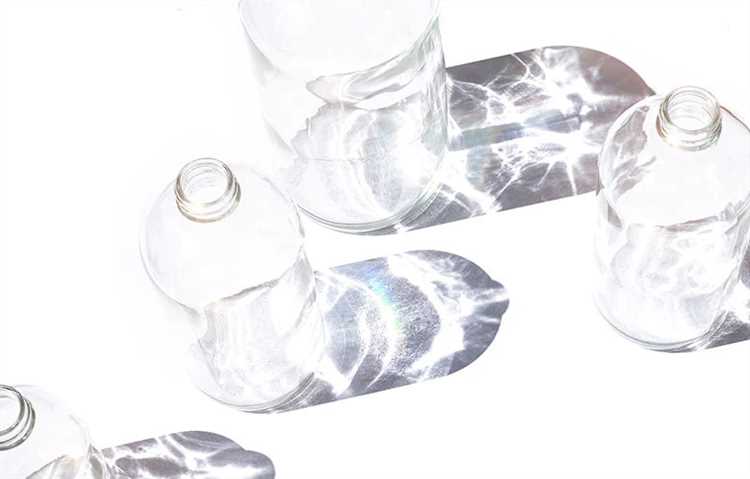
The use of glass bottles dates back thousands of years and has been a staple in storing and preserving various liquids, from beverages to medicines. However, in recent times, glass bottles have seen a decline in popularity and have fallen out of use in many industries. There are several reasons behind this shift.
Firstly, one of the main reasons for the decline in glass bottle usage is the advent of alternative packaging materials, such as plastic and aluminum. These materials offer greater convenience, durability, and lighter weight, making them more appealing to both manufacturers and consumers. Glass bottles, on the other hand, are heavier, more fragile, and require careful handling and storage.
Secondly, environmental concerns have played a significant role in the decreasing use of glass bottles. Plastic bottles, for example, can be easily recycled and are often considered a more environmentally friendly option compared to glass, which requires a considerable amount of energy to produce and recycle. In addition, the transportation of glass bottles is more energy-intensive due to their weight, further contributing to their decreased popularity.
Lastly, cost considerations have also contributed to the decline in glass bottle usage. Glass is a relatively expensive material compared to plastic or aluminum, which has led many manufacturers to switch to more cost-effective alternatives. This not only saves production costs but also reduces overall expenses in terms of storage, transportation, and handling.
- Environmental and Health Concerns
- Increase in Plastic Bottle Usage
- Environmental Concerns
- Efforts to Reduce Plastic Bottle Usage
- Recycling and Waste Management Challenges
- Advantages of Glass Bottles
- 1. Environmentally Friendly
- 2. Safe for Food and Beverages
- 3. Retains Freshness and Quality
- 4. Aesthetic Appeal
- 5. Heat Resistant
- Sustainability and Durability
- Purity and Taste Retention
- Protection from Light
- Sustainability and Environmental Impact
- Changes in Consumer Behavior
- Convenience and Portability
- undefined
- Are glass bottles still being used today?
- Why have glass bottles fallen out of use?
- What are the environmental concerns related to glass bottles?
- What are the advantages of glass bottles?
- Are there any industries that still heavily rely on glass bottles?
- What are the reasons for glass bottles falling out of use?
- What alternatives to glass bottles are available?
Environmental and Health Concerns

Glass bottles have fallen out of use primarily due to environmental and health concerns.
One main concern is the impact of glass bottle production on the environment. Manufacturing glass bottles requires a significant amount of energy and resources. The process involves mining and refining raw materials such as silica, soda ash, and limestone, which can have detrimental effects on the environment. Additionally, the transportation of these materials and finished bottles contributes to greenhouse gas emissions and air pollution.
Another environmental concern is the recycling of glass bottles. While glass is technically 100% recyclable, the reality is that many glass bottles end up in landfills. Glass recycling rates are low in many regions due to a lack of infrastructure, high costs, and consumer confusion about what can and cannot be recycled. When glass bottles are not properly recycled, they can take thousands of years to decompose, creating long-term environmental harm.
Furthermore, the weight of glass bottles is a significant factor in their declining use. Glass is much heavier than alternative packaging materials like plastic or aluminum. This additional weight results in increased transportation costs and fuel consumption during shipping. Companies are increasingly looking to reduce their carbon footprints and transportation costs, leading to a shift away from glass bottles.
In terms of health concerns, glass bottles can pose risks in terms of potential breakage and injury. Broken glass can cause cuts and injuries, making it a less desirable option in settings where accidents are more likely, such as outdoor events or recreational areas. The risk of broken glass also extends to the recycling process, where broken glass can contaminate other recyclables and pose a danger to workers.
Additionally, some studies have raised concerns about the potential for chemical leaching from glass bottles. While glass is generally considered a safe material for storing food and beverages, certain factors such as acidic or high-temperature contents can increase the risk of leaching. This has led to a shift towards alternative materials, such as plastic and stainless steel, in industries where potential leaching is a concern.
- Glass bottle production requires a significant amount of energy and resources, contributing to environmental harm.
- Glass bottle recycling rates are low, leading to long-term environmental damage.
- Glass bottles are heavier than alternative packaging materials, increasing transportation costs and fuel consumption.
- Broken glass poses a risk of injury in both consumption and recycling processes.
- Concerns about chemical leaching have led to a shift towards alternative materials.
Increase in Plastic Bottle Usage
Over the past few decades, there has been a significant increase in the usage of plastic bottles. This trend can be attributed to several factors, including convenience, cost-effectiveness, and improved manufacturing processes.
One of the primary reasons for the rise in plastic bottle usage is convenience. Plastic bottles are lightweight and portable, making them easy to carry and transport. This convenience factor has led to an increase in consumption as people can easily grab a plastic bottle on the go.
Another factor contributing to the increase in plastic bottle usage is cost-effectiveness. Plastic bottles are cheaper to produce than glass bottles, making them a more affordable option for both manufacturers and consumers. This affordability has made plastic bottles more accessible to a wider range of people, further driving their popularity.
Furthermore, advancements in manufacturing processes have made it easier and more efficient to produce plastic bottles. Manufacturers can now produce plastic bottles at a faster rate and with less material waste. These improvements have not only increased the availability of plastic bottles but have also reduced their production costs.
Environmental Concerns
While the increase in plastic bottle usage has offered various benefits, it has also raised concerns about the environment. Plastic bottles are not biodegradable and can take hundreds of years to decompose. This leads to significant environmental pollution, especially when plastic bottles are not properly disposed of.
Additionally, plastic bottles contribute to the growing problem of plastic waste in our oceans and landfills. The improper disposal of plastic bottles can result in marine pollution, endangering marine life and ecosystems. The accumulation of plastic waste on land also poses threats to wildlife and can contaminate soil and water sources.
Efforts to Reduce Plastic Bottle Usage
In response to these environmental concerns, there have been various initiatives and efforts to reduce plastic bottle usage. Governments, organizations, and individuals are promoting the use of reusable bottles, implementing recycling programs, and advocating for stricter regulations on single-use plastic bottles.
Furthermore, some companies have started using alternative materials, such as biodegradable plastics or glass bottles, as a more sustainable option. These efforts aim to reduce the reliance on plastic bottles and minimize their negative impact on the environment.
- Encouraging the use of reusable bottles
- Implementing recycling programs
- Advocating for stricter regulations on single-use plastic bottles
- Exploring alternative materials
Overall, the increase in plastic bottle usage has been driven by factors like convenience, cost-effectiveness, and improved manufacturing processes. However, the negative environmental consequences have sparked efforts to reduce plastic bottle usage and promote more sustainable alternatives.
Recycling and Waste Management Challenges
One of the major challenges associated with glass bottles is the recycling and waste management process. While glass is a highly recyclable material, there are several difficulties in recycling and managing glass bottle waste.
Firstly, glass bottles need to be sorted by color, as different colored glass cannot be mixed together during the recycling process. This requires additional sorting and can be time-consuming and expensive.
Secondly, glass bottles are heavy and bulky, which poses challenges during transportation. The weight of glass bottles adds to the cost of recycling and makes transportation less efficient.
Furthermore, glass often breaks during collection and transportation. Broken glass can contaminate other recyclables and cause injuries to workers. Handling broken glass safely requires proper equipment and training.
In addition to technical challenges, there are also economic factors to consider. The demand for recycled glass is not as high as for other recyclable materials, such as plastic or aluminum. This can make the recycling process less financially viable.
Finally, consumer behavior plays a role in recycling and waste management challenges. Many people still improperly dispose of glass bottles, either by throwing them in regular trash bins or by mixing them with other recyclables. This leads to increased contamination and difficulties in properly recycling glass.
Addressing these challenges requires investment in advanced sorting and recycling technologies, as well as education and awareness campaigns to encourage proper recycling practices. By tackling these obstacles, the recycling and waste management of glass bottles can be improved, making them a more sustainable and environmentally friendly packaging option.
Advantages of Glass Bottles
Glass bottles have been a popular choice for storing liquids for centuries, and for good reason. Here are some of the advantages of using glass bottles:
1. Environmentally Friendly
Glass bottles are considered to be one of the most environmentally friendly packaging options available. Unlike plastic bottles, glass bottles are 100% recyclable and can be reused multiple times without losing their quality. This helps to reduce waste and minimize the impact on the environment.
2. Safe for Food and Beverages
Glass is an inert material, meaning it does not react with the contents it holds. This makes glass bottles a safe and non-toxic option for storing food and beverages. Unlike plastic bottles, glass does not leach any harmful chemicals into the contents, ensuring the purity and safety of the products.
3. Retains Freshness and Quality

Glass is impermeable to oxygen, moisture, and other gases, making it an excellent choice for preserving the freshness and quality of the contents. Glass bottles offer a superior barrier that helps to maintain the flavor, aroma, and nutritional value of the stored liquids for a longer period of time.
4. Aesthetic Appeal
Glass bottles have a timeless beauty and aesthetic appeal that is unmatched by other packaging materials. The transparency and clarity of glass allow the contents to be showcased in an attractive way, making glass bottles not only functional but also visually appealing.
5. Heat Resistant
Glass bottles have the advantage of being heat resistant, which makes them suitable for storing hot and cold beverages alike. They can withstand high temperatures without deforming or releasing any harmful substances, making them a reliable choice for various applications.
In conclusion, glass bottles provide several advantages over other packaging options. They are environmentally friendly, safe for storing food and beverages, help retain freshness and quality, offer aesthetic appeal, and are heat resistant. These attributes make glass bottles a versatile and preferred choice for many consumers.
Sustainability and Durability
Glass bottles are known for their sustainability and durability, making them an ideal packaging choice for beverages and other products. One of the key advantages of glass bottles is their ability to be reused multiple times. Unlike plastic bottles, which often end up in landfills after just one use, glass bottles can be washed and reused numerous times without compromising their structural integrity.
This reusability factor reduces waste generation and the need for new bottle production, making glass bottles a more environmentally friendly option. The production of glass bottles also has a lower carbon footprint compared to other packaging materials. Glass is made from abundant natural raw materials, such as sand, soda ash, and limestone, making it a sustainable choice.
In addition to their sustainability, glass bottles are highly durable. Glass is resistant to temperature changes, ensuring that the contents inside are kept safe and fresh. Unlike plastic bottles, which may leach harmful chemicals under certain conditions, glass bottles provide a reliable and inert barrier, maintaining the quality of the product they contain.
The durability of glass bottles also contributes to their longevity. Glass bottles can last for decades with proper care, making them a cost-effective choice in the long run. Additionally, their durability allows for easy transportation and storage, making them a preferred option for manufacturers and retailers.
Overall, the sustainability and durability of glass bottles make them an excellent choice for packaging various products. From a reduced environmental impact to long-lasting quality, glass bottles embody the values of sustainability and durability.
Purity and Taste Retention
Glass bottles have long been favored in the food and beverage industry for their ability to preserve the purity and taste of their contents. Unlike other materials such as plastic or metal, glass is nonporous and impermeable, which means it does not absorb or release any substances that could compromise the quality of the product inside.
Furthermore, the inert nature of glass ensures that it does not react chemically with the contents, preventing any unwanted flavors or odors from being transferred. This is especially important for beverages such as wine and beer, where any alterations in taste can significantly impact the consumer experience.
Protection from Light
An additional advantage of glass bottles is their ability to protect the products from harmful UV radiation. This is particularly crucial for beverages, as exposure to light can lead to the degradation of certain compounds, resulting in off-flavors and a decrease in quality.
Glass containers, especially those with dark tints or coatings, offer excellent light-blocking properties, minimizing exposure and maintaining the product’s integrity. This is particularly important for light-sensitive items such as oils, spirits, and certain medications.
Sustainability and Environmental Impact

Besides their inherent ability to retain purity and taste, glass bottles are also favored for their sustainability and minimal environmental impact. Glass is 100% recyclable, meaning it can be used repeatedly without loss of quality or purity.
Additionally, the energy required to produce glass bottles is significantly lower compared to other materials such as plastic or aluminum. The raw materials used in glass production, such as sand, soda ash, and limestone, are abundant and readily available, making it a more sustainable choice.
In conclusion, glass bottles offer a range of benefits, including the preservation of purity and taste, protection from light, and sustainable characteristics. These advantages make glass bottles a popular choice among manufacturers and consumers alike, even though they may have fallen out of use in some industries due to other factors such as cost and convenience.
Changes in Consumer Behavior
Over the years, there have been significant changes in consumer behavior when it comes to packaging choices. With the advent of plastic bottles and cans, glass bottles have fallen out of favor among many consumers. This shift can be attributed to various factors.
Firstly, convenience plays a major role in the preference for plastic bottles and cans. Glass bottles are often heavier and more fragile, making them less practical for on-the-go consumption. Plastic bottles and cans, on the other hand, are lightweight and can be easily carried around, making them more convenient for busy consumers.
Secondly, consumer perception and awareness have influenced the decline in glass bottle usage. With the increasing focus on sustainability and environmental concerns, many consumers now prefer packaging options that are perceived as more eco-friendly. Plastic bottles and cans, although not ideal in terms of their environmental impact, are often perceived as more recyclable and sustainable compared to glass bottles.
Moreover, the rise of e-commerce has also contributed to the decline of glass bottle usage. With the growth of online shopping, manufacturers and retailers have had to prioritize packaging options that are more lightweight, durable, and cost-effective for shipping. Plastic bottles and cans fulfill these criteria better than glass bottles, making them more suitable for the e-commerce market.
Lastly, the preferences and habits of younger generations have also influenced the decline in glass bottle usage. Millennials and Generation Z, who make up a significant portion of the consumer market, tend to prioritize convenience and sustainability. They are more likely to gravitate towards packaging options that align with their values, such as plastic bottles and cans.
In conclusion, changes in consumer behavior, driven by factors such as convenience, perception, e-commerce demands, and generational preferences, have contributed to the decline in the use of glass bottles. While glass bottles may still hold a certain charm and appeal for some consumers, the overall shift towards more convenient and eco-friendly packaging options has led to their decreased popularity.
Convenience and Portability
One of the main reasons why glass bottles have fallen out of use is convenience and portability. Glass bottles, although durable and sturdy, are heavier and more fragile compared to their alternatives, such as plastic or aluminum bottles.
Consumers today value convenience and portability more than ever. Glass bottles can be cumbersome to carry around, especially in situations like outdoor activities or traveling. They add unnecessary weight and increase the risk of breakage, making them less practical for on-the-go use.
Plastic and aluminum bottles, on the other hand, are lightweight and shatter-resistant, making them much easier to transport and handle. They are ideal for busy individuals who are constantly on the move and need a convenient way to stay hydrated.
In addition, the rise of single-use packaging trends has contributed to the decline of glass bottles. Single-use plastic bottles are highly convenient as they can be easily discarded after use, eliminating the need for cleaning and storage. This convenience has led to their widespread adoption and preference over glass bottles.
Furthermore, advancements in technology have allowed manufacturers to create innovative and portable designs for plastic and aluminum bottles. They can now offer features like collapsible or foldable bottles that can easily fit into small spaces when empty, making them more space-efficient and travel-friendly.
Overall, the convenience and portability offered by plastic and aluminum bottles have played a significant role in the decline of glass bottles. Consumers prioritize ease of use and practicality, leading to the shift towards lighter, more portable alternatives.
undefined
Are glass bottles still being used today?
Yes, glass bottles are still being used today, but their use has declined compared to previous decades.
Why have glass bottles fallen out of use?
Glass bottles have fallen out of use due to several reasons. One reason is that plastic bottles are cheaper to produce and lighter to transport. Additionally, plastic bottles are less likely to break and are more convenient for on-the-go consumption.
What are the environmental concerns related to glass bottles?
Glass bottles have environmental concerns as they consume a large amount of energy and resources during the manufacturing process. They also contribute to landfill waste as glass takes a long time to decompose. However, glass is recyclable and can be reused, which helps mitigate some of the environmental impact.
What are the advantages of glass bottles?
Glass bottles have several advantages. They are impermeable, meaning they do not leach chemicals into the contents. Glass also provides a pure taste and preserves the flavor of beverages. Additionally, glass is recyclable and can be reused multiple times.
Are there any industries that still heavily rely on glass bottles?
Yes, there are industries that still heavily rely on glass bottles. The wine and spirits industry, for example, often prefers glass bottles as they maintain the quality and taste of the beverages. Similarly, some craft breweries choose to use glass bottles for their products.
What are the reasons for glass bottles falling out of use?
Glass bottles have fallen out of use for several reasons. One of the main reasons is the rise of plastic bottles, which are cheaper and lighter. Plastic bottles are also easier to produce and transport, making them more convenient for companies. Additionally, plastic bottles are less likely to break, which is a major advantage over glass bottles. Another reason for the decline in glass bottle usage is the environmental concern. Glass bottles require a lot of energy to produce and recycle, and they take a long time to decompose if not properly recycled.
What alternatives to glass bottles are available?
There are several alternatives to glass bottles that have gained popularity in recent years. One of the most commonly used alternatives is plastic bottles. Plastic bottles are lightweight, durable, and more cost-effective to produce. Another alternative is aluminum cans, which are lighter than glass bottles and are easily recyclable. These cans also provide better protection against light and oxygen, which helps preserve the quality of the product. Additionally, there is a growing trend towards using eco-friendly packaging materials such as biodegradable containers made from plant-based materials like cornstarch or bamboo fiber.